Pencil art with deep meaning can pack a real punch, even without color. Some drawings show melting figures to capture the feeling of losing yourself, while others use hourglasses to remind us how fast time slips by. Night skies full of stars stand in for hope during tough times, and sketches of broken hearts hit right in the feels. There’s art about silent struggles, nature’s changes, powerful quotes, and even drawings shining a light on social issues. Curious? There’s more just ahead.
Key Takeaways
- Pencil sketches of melting figures express emotional vulnerability and fading identity, resonating with themes of self-doubt and inner struggles.
- Hourglass and burning candle drawings represent the fleeting nature of time, reflecting on impermanence and personal journeys.
- Black and white art of tangled night skies illustrates overthinking, anxiety, and the hope found in moments of darkness.
- Nature-inspired sketches, like butterflies from caterpillars, symbolize personal growth and ongoing transformation.
- Artworks highlighting broken chains and shattered hearts address social issues and emotional pain, promoting awareness and resilience.
Silence Drawing Illustrations
Sometimes, just looking at a silence drawing illustration feels like peeking into someone’s secret thoughts.
These black and white art sketches are more than pencil marks on paper—they’re Drawing Ideas that dig deep into what it means to be an overthinker or just quietly lost in thought.
Black and white sketches that reveal what it feels like to be caught inside your own thoughts, without saying a word
The shading is rich, full of shadows and nighttime vibes, giving off that heavy, quiet feeling.
Some drawings feature melting people, almost like they’re fading into their worries, which is weirdly relatable and kind of powerful.
The whole scene can feel like a secret code for vulnerability, capturing emotions too tough to say out loud.
These illustrations let viewers pause, reflect, and maybe even spot something about themselves, all without saying a single word.
Woman Burning Candle
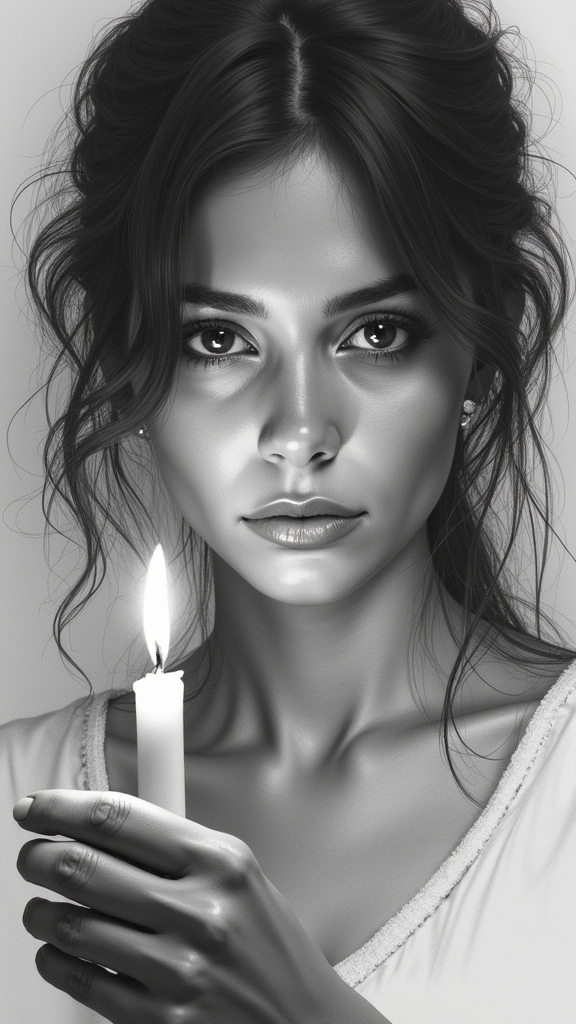
A pencil drawing of a woman holding a burning candle can say a lot without using a single word, shining light—literally—on the idea of finding hope in the quietest moments.
That flickering candle always means more than just wax and flame; it’s about the struggle to keep going, even when your only company is your own thoughts.
There’s something powerful and a bit lonely about these pictures, where a single spark of light stands out against the shadows, just like someone searching for answers in the middle of a silent night.
Symbolism of Candlelight
Introspection shows up in pencil art as a tiny flame, flickering in the careful drawing of a woman burning a candle. Candle symbolism packs a big punch—even in small, quiet images.
The candle’s soft light slices through the darkness, showing off dramatic light and shadow, and giving a feeling that something deep is happening. It’s not just about looking pretty; it suggests those introspective moments when your mind wanders, thinking about life or maybe even worrying a bit.
The melting candle is like a timer, reminding everyone how fast time moves and how moments can slip away before you even notice. Still, that gentle glow seems to fight back the gloom, hinting at hope and the spark of ideas, even in confusing or overwhelming times.
Solitude in Portraiture
Now, it’s one thing to see a candle’s gentle glow in pencil art, but something totally different happens when an artist draws a woman alone with that flickering flame.
In these introspective portraits, every shadow, every bit of light, tells a story of emotional isolation. The candle itself isn’t just there for show—it’s a symbol, its melting wax hinting at thoughts and feelings that fade as quickly as the flame burns down.
There’s something haunting yet comforting about the way the woman sits quietly, lost in deep thought. Candle symbolism in these portraits highlights moments that feel private and real, almost like peeking into someone else’s diary.
For many viewers, these drawings trigger memories of their own quiet nights and hidden worries.
Sketches of Melting People
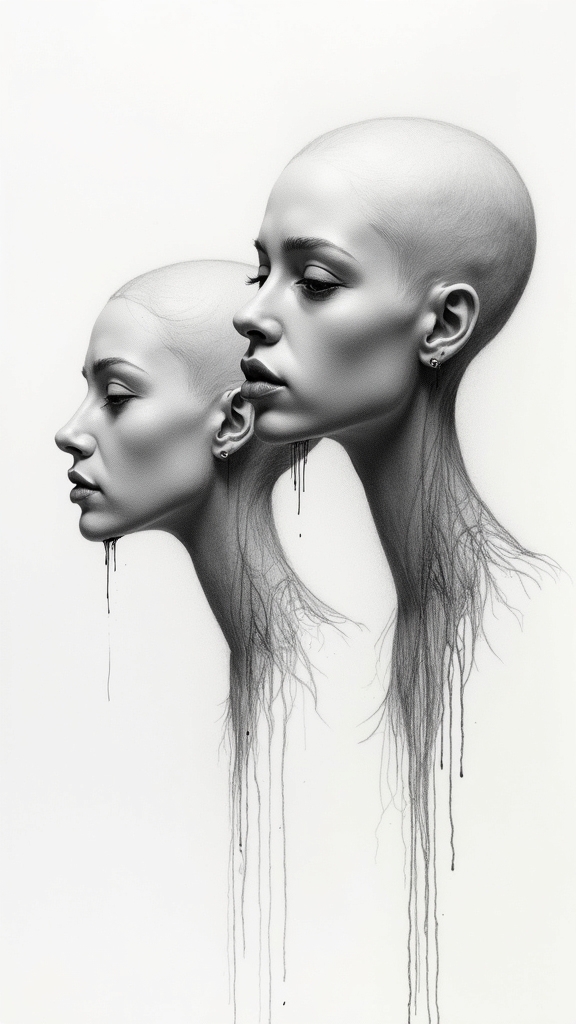
Melting people in pencil sketches might look strange at first, but they’re kind of a big deal when it comes to showing tough emotions.
Imagine a person whose outline starts to drip and sag, as if their body can’t hold together anymore. That’s a visual way to talk about melting identity—the sense that who you are is slipping away.
Artists use droopy faces and smeared arms to show emotional vulnerability, the feeling of falling apart on the inside, even if you look okay on the outside. The melting shapes can also look like someone’s thoughts are overflowing in messy, chaotic ways.
These drawings aren’t just weird—they help viewers connect with feelings of self-doubt and instability, making them relatable, and, believe it or not, pretty powerful.
Night Aesthetics and Overthinking
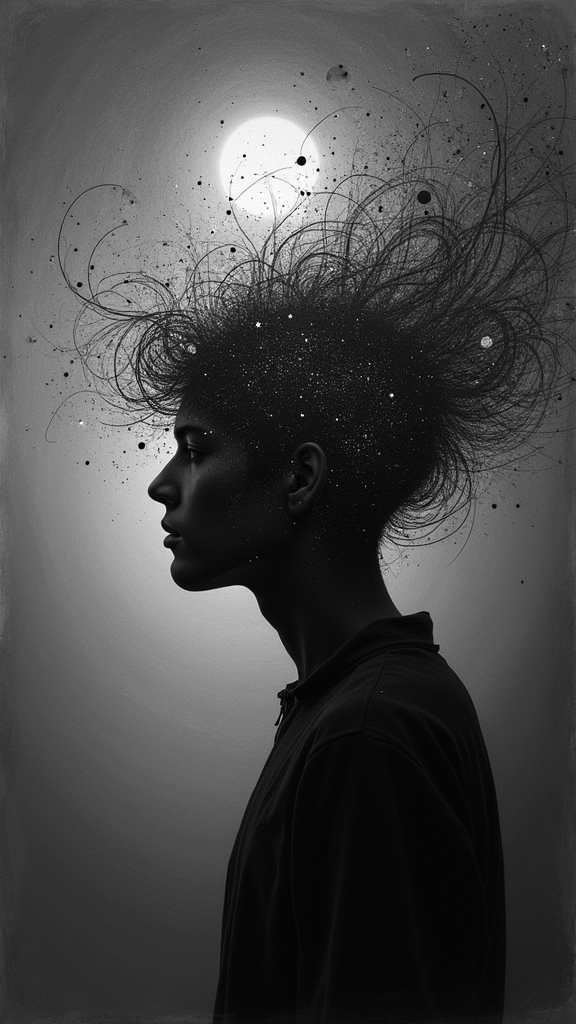
When the world goes quiet at night, pencil art can get pretty dramatic, especially for anyone who’s ever overthought things way past bedtime.
Artists love using the deep tones of a night sky and clever shadow play to give drawings that heavy, alone-in-your-head kind of vibe. You’ll see blurry lines, fog, and just enough darkness to make you feel like you’re walking through someone’s tangled thoughts.
The stars and moon sneak in as tiny hopeful spots, like your brain searching for a shred of clarity. Night-themed pencil art really lays out emotional depth—it’s all about that push and pull between confusion and understanding.
These pictures almost whisper, “Hey, you’re not the only one lying awake, thinking about everything at once.”
Hourglass Drawings About Time
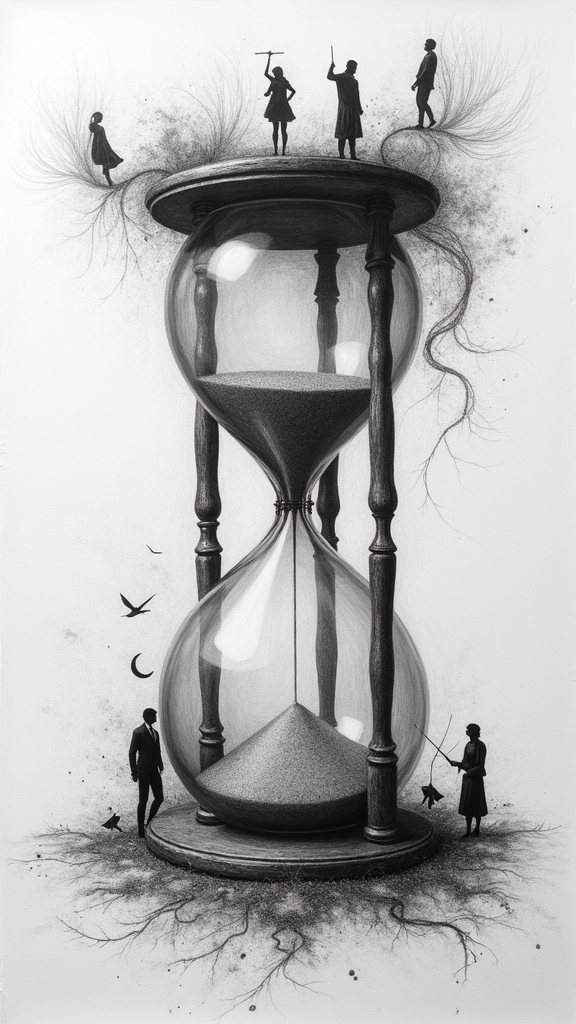
Time has a funny way of slipping past, and hourglass drawings capture that feeling perfectly. These sketches aren’t just about grains of sand—they’re packed with meaning.
Watching the sand trickle down sparks a real sense of time reflection. People might laugh and say, “It’s just a glass with sand,” but artists know those fleeting moments matter. Every swirl or extra symbol wedged into an hourglass drawing says something deeper—maybe about memories, choices, or personal growth slipping away or piling up.
Here are four ways these drawings make us think:
- They show how fast time flies—blink and you’ll miss it.
- Each grain stands for moments we’ve lived or lost.
- Hourglasses remind everyone that change is constant.
- Artistic details invite viewers to reflect on their journey.
Depression and Scattered Mind Art
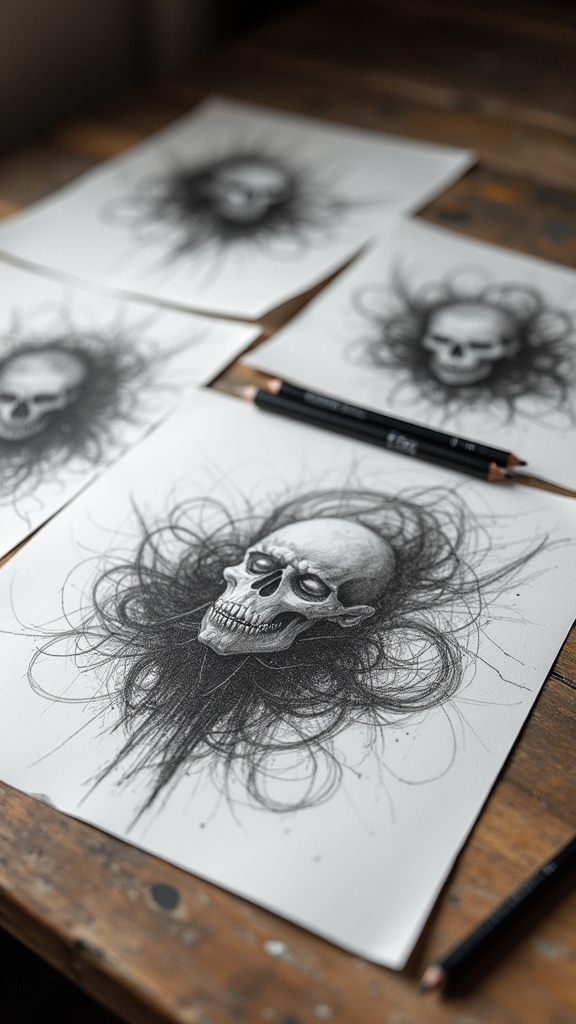
Ever wondered how people draw what anxiety or sadness actually feels like?
Depression and scattered mind art is a unique kind of artistic expression that dives right into the struggles of mental health. The drawings often show chaotic lines and broken shapes, almost as if someone’s thoughts are bouncing all over the place—like a pinball machine gone wild.
Artists use dark color palettes, twisted figures, and even melting objects to turn emotions into visual storytelling. Sometimes, you’ll see tiny, boxed-in spaces in sketches, capturing that trapped, hopeless vibe people sometimes feel.
These powerful images don’t just look cool—they help others who feel the same confusion or despair realize they’re not alone. That’s the magic of art: communicating without a single word.
Toxic Love and Heartbreak Sketches
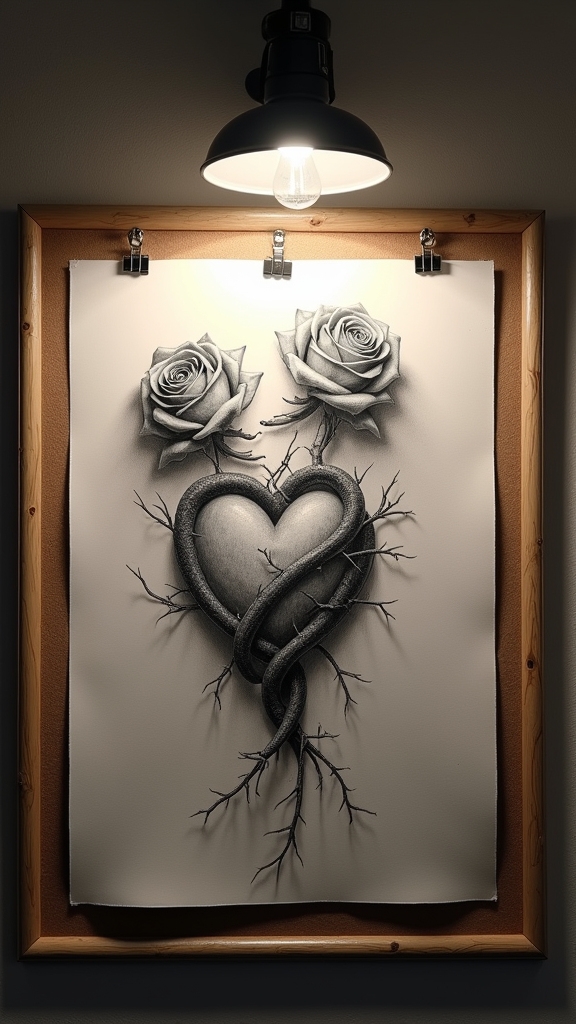
Toxic love and heartbreak sketches really put the drama of messy relationships right on paper, showing tangled hearts, broken promises, and all the chaos that comes with it.
Artists love to use powerful symbols like shattered glass and tangled chains, making it super obvious just how rough love can get.
Sometimes, these drawings act like a megaphone for emotions, letting both the artist and anyone looking at the art scream out their sadness without saying a word.
Visualizing Destructive Relationships
Heartbreak isn’t just a feeling—it’s a story, and pencil art brings it to life in some seriously dramatic ways. When artists set out to show toxic relationships, they don’t hold back.
Through sharp lines, dark shadows, and some pretty wild faces, these sketches capture all the emotional turmoil you can imagine. It’s like watching someone pour their soul onto paper, mixing sadness with a dash of anger. You see heartbreak through the eyes of artistic expression, and suddenly, you feel less alone.
Here’s how destructive relationships show up in pencil art:
- Jagged, broken hearts and messy, twisted lines.
- Figures locked in chains or cages (not exactly romance goals).
- Sharp contrasts of light and dark to show struggle.
- Fragmented faces that seem lost in thought or pain.
Symbolism in Broken Hearts
Stepping into the world of broken hearts in pencil art, it’s like opening a secret diary that’s full of emotions people usually try to hide.
Artists dive right into the pain, sketching shattered hearts and using heartbreak metaphors like cracked glass or wilting flowers to reveal emotional fragility. You can almost hear the crunch when you look at them!
These drawings don’t just show lost love—they scream about the complicated relationship dynamics behind every crack and tear. Darker shades and heavy shadows add weight, making the sorrow feel real.
Sometimes, there’s a wild mix of bright passion and gloomy betrayal showing how toxic love can ruin things. In these pencil sketches, every line tells a story of longing, isolation, and deep reflection.
Expressing Emotional Release
Sometimes, anger feels like a storm trapped in your chest, bursting out onto the page with every pencil stroke. Artists dive deep into emotional vulnerability when they sketch toxic love and heartbreak.
Their drawings—twisted figures, shattered hearts, wilted flowers—aren’t just doodles; they’re a relatable expression of pain and hope. These pictures let artists chase artistic catharsis, finding relief after a messy breakup or toxic friendship.
The use of dark shading and wild, jagged lines makes every drawing feel like a scream or, sometimes, a sigh.
Here’s how these sketches share their emotional punch:
- Contrasting imagery to show unhealthy relationships.
- Strong symbols, like wilted flowers for loss.
- Wild lines and shadows for chaotic emotions.
- Shared art builds comfort and community online.
Nature, Life Cycles, and Identity
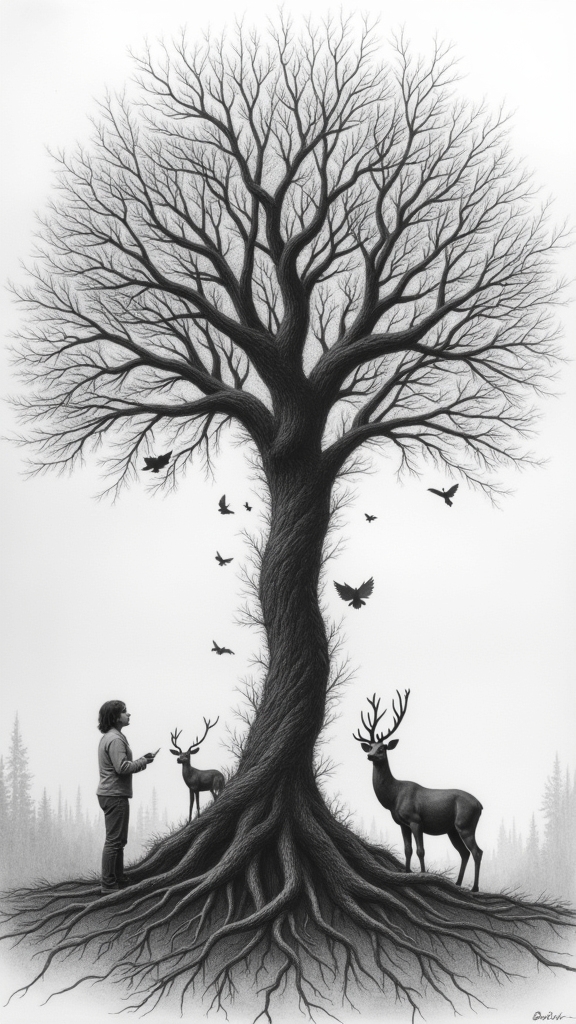
Although pencil art might seem simple at first glance, it has an amazing way of pulling people into the wild worlds of nature, life cycles, and identity.
Sometimes, a drawing of a single leaf can shout about nature symbolism louder than a whole forest. Artists love to sketch things like caterpillars turning into butterflies. Why? Because that life cycle is an awesome way to show how people grow and change. It’s like the ultimate nature-themed metaphor for identity transformation.
Black and white drawing styles dial up the drama, using shadows and light to remind us that life isn’t just good or bad—it’s complicated!
Pencil sketches also reflect unique cultures and experiences, helping us recognize what makes each person and every living thing special.
Drawings With Meaningful Quotes
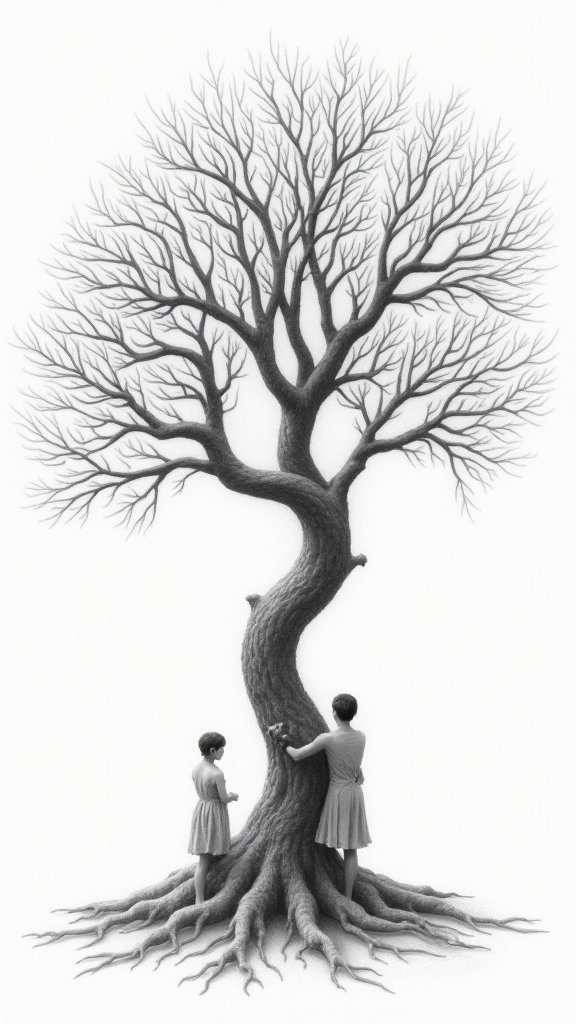
Why does a pencil drawing feel so much more powerful when there’s a meaningful quote written beside it?
Sometimes, the right words can turn a simple sketch into something unforgettable. They spark meaningful connections and give the drawing a voice of its own, making the message hard to ignore.
The right words can transform a sketch, giving it a voice and forging a connection that lingers in the heart.
When artists mix words with visuals, it’s like opening a window to someone’s heart or mind—suddenly, it’s more than just a picture. It’s a little story bursting with emotional resonance and narrative exploration. Powerful, right?
- Emotional connection: Quotes make people pause and actually *feel* the art.
- Deeper understanding: Words help explain complex emotions in the artwork.
- Storytelling boost: Art becomes more of a journey, not just a drawing.
- Lasting impact: Viewers remember both the image and the quote, long after.
Social Issue Reflections in Pencil Art
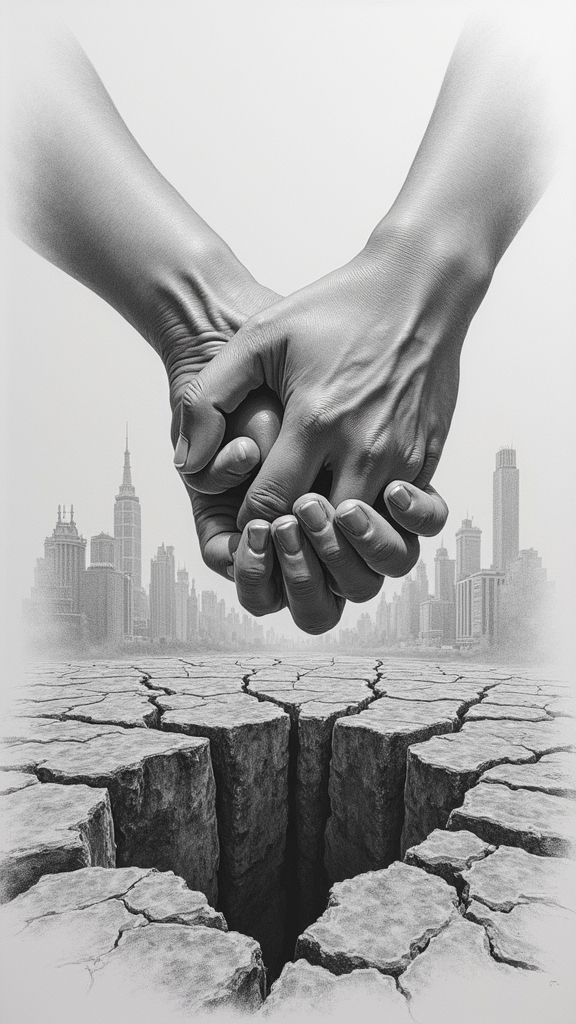
While a single pencil drawing might seem ordinary at first, it can actually pack a major punch when it tackles serious social issues.
Pencil art isn’t just about drawing pretty things—it’s a form of artistic activism, making tough topics like poverty, mental health, and discrimination feel personal.
When an artist sketches broken chains or melting people, it’s not just cool or creepy; it’s a shout for social justice and a tribute to community resilience.
The black and white shading chips away any sugar-coating, giving viewers a real look at people’s struggles.
These drawings can tug at your heartstrings, push you to think, and maybe even change your mind about what’s fair.
Sometimes, a simple pencil lead can be the loudest voice in the room.
Frequently Asked Questions
What Can an 11 Year Old Draw?
An 11-year-old can draw a variety of subjects, including detailed nature scenes, expressive animal portraits, and imaginative characters. Exploring these themes helps develop creativity, technical skills, and personal expression as young artists experiment with different drawing techniques.
What to Draw 100 Ideas?
When seeking 100 ideas of what to draw, one may explore abstract concepts, investigate emotional themes, or reflect on personal experiences. Such variety encourages creativity and deeper artistic expression across different subjects and interpretations.
What Is the Meaning of Pencil Drawing?
The meaning of pencil drawing encompasses artistic expression, enabling artists to create visual storytelling and forge emotional connection with viewers. Through graphite techniques, pencil drawings transform ideas and emotions into compelling images that resonate on both personal and universal levels.
How Can I Make My Drawings Meaningful?
To make drawings meaningful, one should infuse expressive techniques, integrate symbolic elements, and draw upon personal experiences. This approach allows the artwork to communicate deeper messages, resonate emotionally, and invite viewers to interpret layered meanings within each piece.
Conclusion
Pencil art isn’t just about lines and shading—it’s about telling a story, making people feel, and sometimes even making them think twice. These ten drawings show how a simple pencil can dig deep and pull out emotions you didn’t expect. Whether it’s silence, heartbreak, or big life questions, every sketch has something to say. So, next time you pick up a pencil, remember: your ideas might be way more powerful than you think!

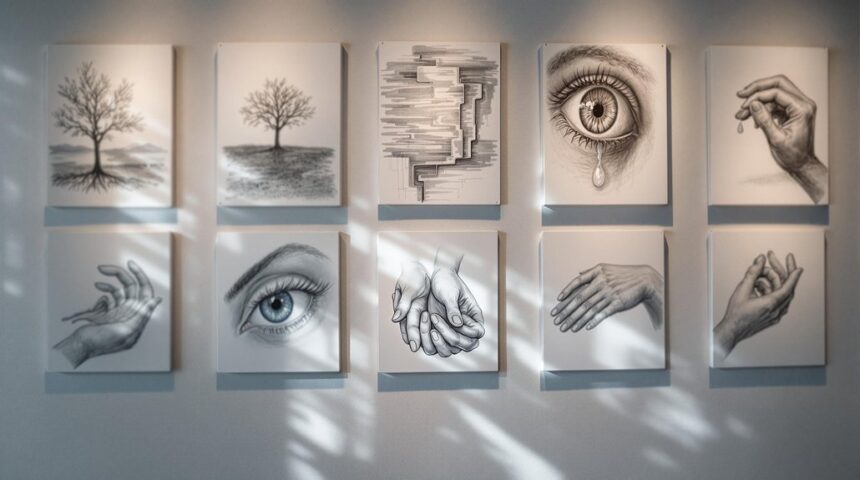
Leave a Reply